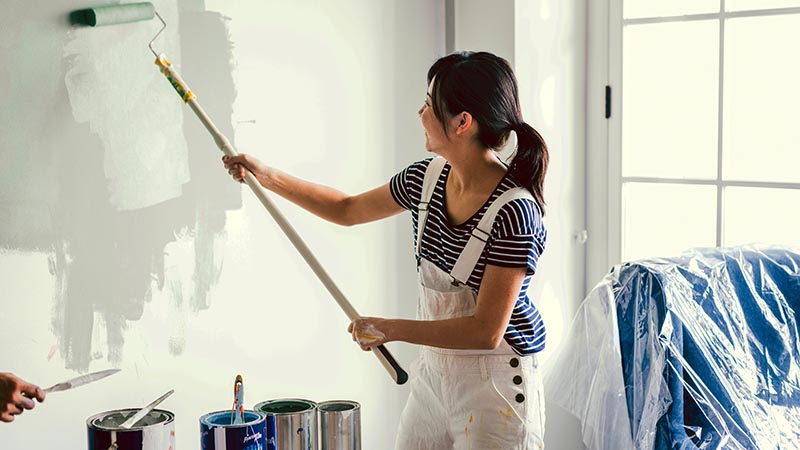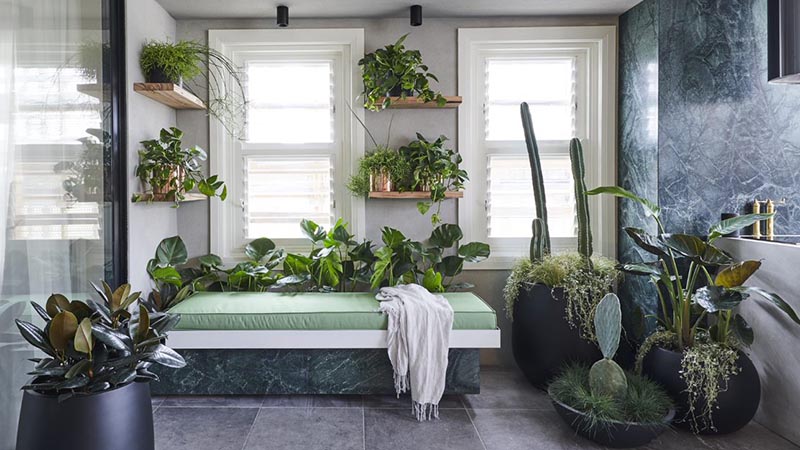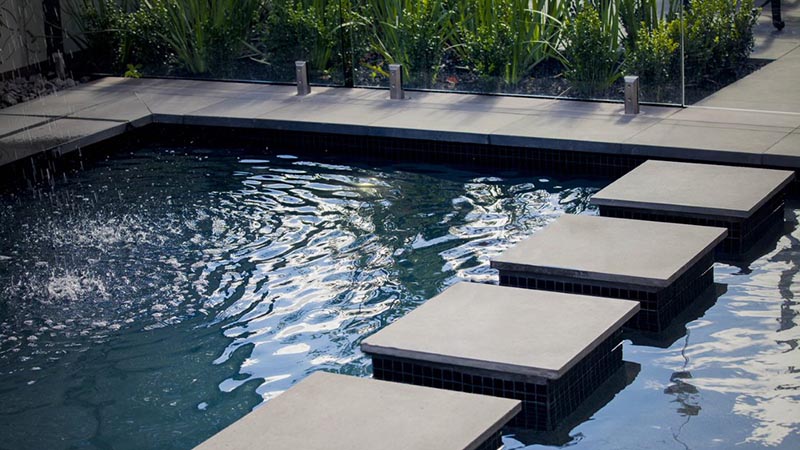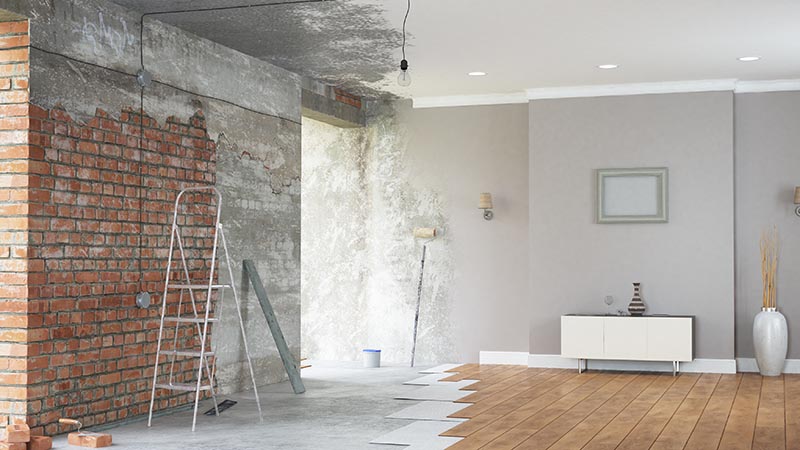Renovation spend booming but capital value varies
With Australians spending $1 billion per year on property renovations the risk of overcapitalising increases, as some renovations generate more long-term value than others.
Australians are spending around 30 per cent more on home renovations than they were before the Covid pandemic sent everyone scurrying to the local hardware store.
The latest national homebuilding approval figures show that Australians spent just over $3 billion on home renovations during the June 2022 quarter.
This growing renovation trend is underlined by the fact that Australians were spending on average around $700 million per month in 2019 on home renovations whereas they are now spending $1 billion per month.
But when it comes to home improvements, some investments are translating into corresponding capital value increases on the property while others are not equating to a corresponding increase in home value.
Daniel McQuillan, Managing Director of Nu Wealth, said that since the onset of the pandemic, home renovations have become very popular as more people started to work from home.
“In addition, more people have decided to use the disposal income they previously spent on overseas holidays to make their home more comfortable,” he said.
“More people are also buying homes for renovation purposes and especially investors who are seeking to boost rental returns by upgrading old homes during a time of a shortage of rental properties throughout Australia.
“With Australians effectively spending over $250 million each week on home renovations, it is critical not to over-capitalise, especially if you are a property investor.
“Many first-time investors make the mistake of becoming emotionally attached to their properties and spend money that will not add any additional value to the property.
Based on the selling price of many homes, Nu Wealth found that a recovery percentage can be estimated for each renovation project. This can vary depending on the location of the property and quality of the renovations.
Not all renovations are equal and overcapitalising on a upgrades before a sale can be costly.
“The returns a home renovator can achieve on a renovation vary from location to location, depending on the capital values of the properties and the type of homes in highest demand in the area.”
Kitchen renovation (60% – 80% return)
Most kitchen improvements usually offer high returns. The smaller your investment, the higher the potential for recovering costs. If resale value is critical, avoid budget-breaking extras such as state-of-the-art hob, oven or premium countertops. Fresh paint can take years off the perceived age of a kitchen. Select a light, neutral colour. Buyers will pay special attention to cleanliness, layout and storage capacity. Emphasise spaciousness by keeping countertops clear and cupboards well managed.
Solar panels (90% – 100% return)
Solar panels are becoming one of the most popular home improvements in Australia due to the energy savings they offer. They are also an important selling feature for potential property buyers. A major study by the National Bureau of Research in the United States has found that homeowners who install solar panels and then sell their property recoup 97 per cent of their investment plus energy savings.
Bathroom renovation (60% – 80% return)
Renovating a main bathroom makes sense. If you are upgrading a bathroom, consider revamping it with two hand basins and a separate shower (very popular) and bath. Painting, tiling walls and/or painting ceilings is the least expensive way to improve your bathroom. Use a one-colour scheme to make it easier for buyers to imagine their accessories.
New room (70% – 90% return)
Be careful not to overdevelop the property for your suburb. For example, adding a third bedroom will be more valuable than a fourth bedroom. However, you may require a study in place of the fourth bedroom.
Master bedroom en-suite (60% – 80% return)
If you want to create a luxurious master en-suite, it's cheaper to modify underutilised areas than to add on, because the roof, foundations and some walls are in place. But if you eliminate a third bedroom in the process, you may find it harder to sell your home. Try to find space elsewhere. You may even decide to build on.
Patio (65% – 75% return)
Outside living areas are popular. Ensuring privacy will make the patio more desirable. A small patio that replaces a crumbling concrete slab can make a positive impact on the sale of your home.
Landscaping (75% – 100% return)
A planting project that improves the front of your home is a good choice if you plan to sell soon. It is wise not to over-plant, as some buyers look at extensive planting as more work than pleasure. The garden should be easy to maintain and always appear neat from the roadside, as this is the first impression that homebuyers have of your home.
Security (75% – 100% return)
Security is a growing issue for many homeowners, and generally, money spent to improve the security of a home will prove to be a major attraction to a large spectrum of homebuyers.
Swimming pool (50% return)
Pools are generally installed by families for lifestyle reasons. However, when they sell their home, they will find that homebuyers are divided on the attraction of a pool, because a large number of people do not want to purchase a property with a swimming pool.
“The guide above does indicate that not all home renovations deliver high financial returns and property investors should research carefully before undertaking a major renovation,” Mr McQuillan said.
Small yard, big gains
While some see the shrinking size of the back garden as the end to an outdoor oasis for entertaining and relaxing after a hard week’s work, a small garden can often be more easily transformed into a lavish exterior than larger spaces.
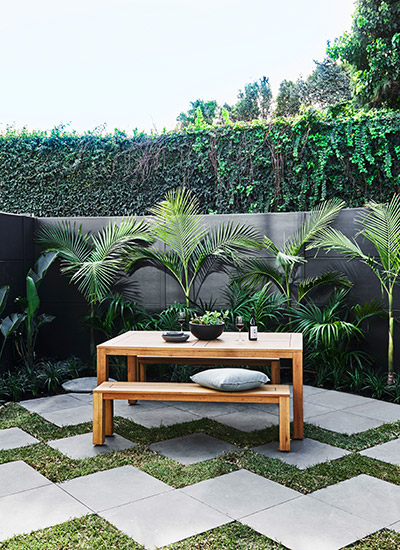
Beaumont Tiles Design Specialist, Rachel Gilding, said with a bit of savvy styling and know-how, even the most modest backyards could be transformed into a lavish exterior that would keep pace with the times.
“Smaller yards can often open up opportunities for greater creativity, with shrewd additions creating a big impression while still making functional use of the space,” Ms Gilding said.
“So often many small outdoor areas are left dull, with the view that there is little that can be done, however with a few easy adjustments, these spaces can thoroughly change the overall look and value of the property.”
She said these three ideas that can help change a small backyard from dreary to appealling:
Splashing out
Pending the size of your garden, Ms Gilding said consideration should be given to a bath, spa, or water feature to help transform your patch into a bit of beautiful backyard bliss.
“Any water design feature can create a relaxing vibe and brightens any space with its brilliant bluey reflective hues,” Ms Gilding said.
“The feature doesn’t have to be big; water features can create that Zen vibe without a massive loss of square metres.”
Firepit flair
Ms Gilding said that while a firepit may seem unrealistic for a smaller backyard, there is a range of smaller braziers or fire pits available that overcome the challenge.
“A fire pit is a design feature that draws the eye at a social gathering and is where people will naturally gravitate to,” said Ms Gilding.
“If you have modest space, try a free-standing outdoor fireplace up against the fence or a concrete wall to utilise that limited space you have but make sure you check your fire regulations before installation.
“Adding outdoor porcelain pavers with a concrete base can be the perfect accessory to this area, as pavers can be used as a suitable base thanks to being fireproof and durable.”
Gorgeous greenery
An all-natural look can be a soothing focus for creating a hideaway from your next-door neighbours or the sprawling neighbourhood you live in, and you don’t need too much room for this.
“It’s all about bringing nature into an overall design narrative, to bring harmony and wellness to the space.
“One of the incredible ways to make the most of limited space is to make a vertical garden, which can create a great privacy screen from your neighbours and can also be used to grow herbs and vegetables for lovely garnishes for those home-cooked meals.”


